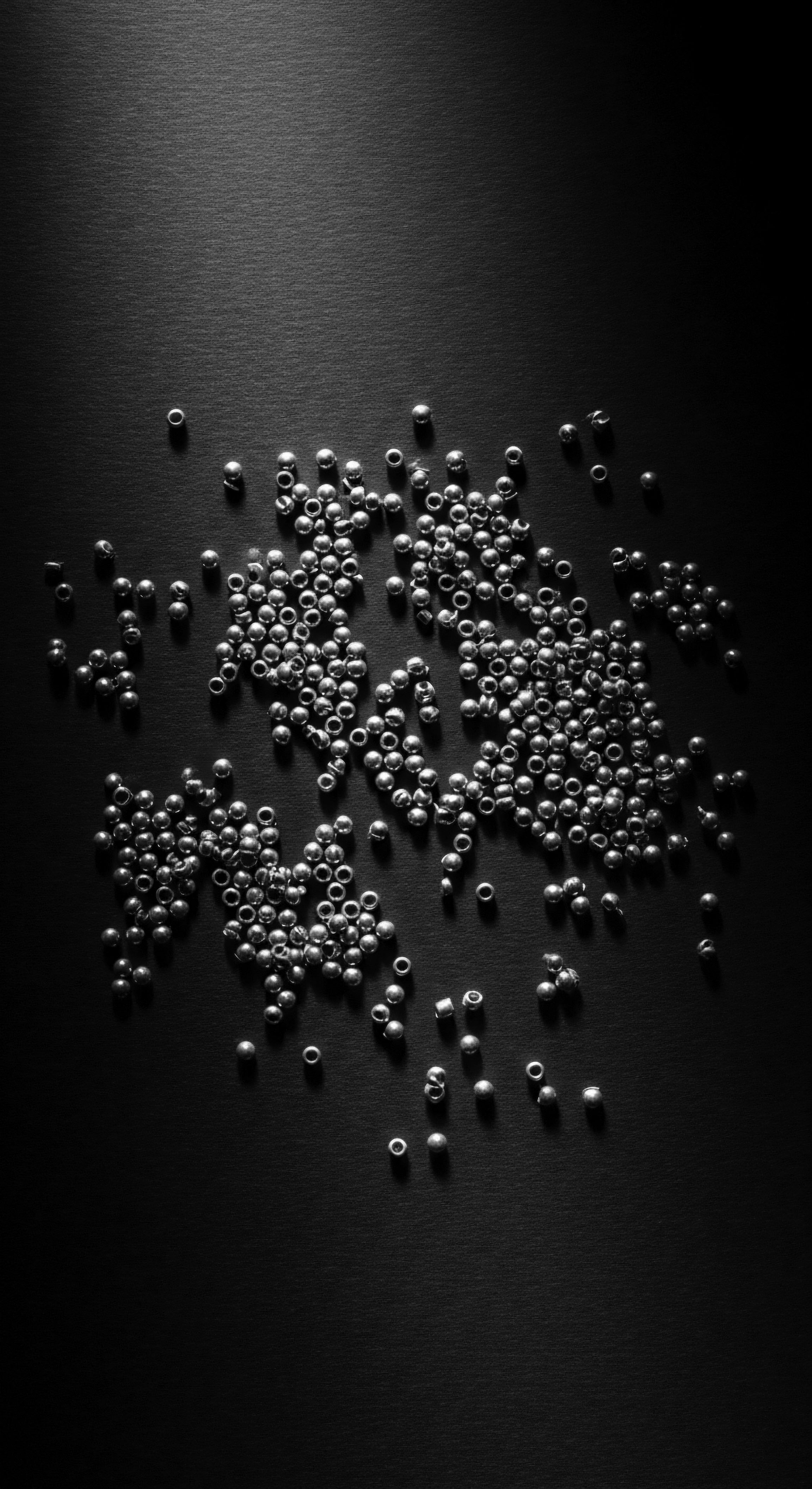
Roots
The strands that crown our heads, particularly those with the spirited curl and coil, carry within them not simply biological information but a profound ancestral memory. Each bend, each ripple, each tight turn speaks a silent language, a testament to journeys across continents, adaptations to diverse climates, and expressions of identity that predate recorded history. To speak of acceptance for textured hair in every professional setting is to begin not in the contemporary boardroom or bustling office, but in the elemental origins of the hair itself – a story woven into the very fabric of our being, a legacy whispering through generations.
Consider, for a moment, the foundational differences. Textured hair, often described as coily, kinky, or curly, possesses a unique elliptical follicle shape, setting it apart from its straighter counterparts. This distinct morphology affects everything, from how sebum travels down the hair shaft to its inherent strength and fragility.
The very geometry of the follicle, a gift from our forebears, means that textured hair spirals into itself, creating natural bonds and tangles that, while offering volume and protective qualities, can also make it more prone to dryness and breakage. This isn’t a deficiency; it is a specialized design, honed over millennia in response to environmental conditions and needs.

The Architecture of Ancestry
The inherent architecture of textured hair is not merely an aesthetic distinction; it is a biological marvel. When we examine a single strand under magnification, we observe its unique twists and turns, often with varying diameters along its length. These structural complexities contribute to its remarkable elasticity and ability to absorb and retain moisture, though this process can sometimes be slower than with other hair types.
The cuticle layers, those tiny, overlapping scales that shield the inner cortex, may be more open in certain areas of a curl or coil, leaving the hair more susceptible to external elements and requiring a distinct approach to care. This understanding, though modern science lends its lens, echoes the intuitive knowledge passed down through generations of caregivers who knew, often without explicit scientific terms, the hair’s particular thirst and its need for gentle attentiveness.
Understanding the very fiber of textured hair demands we look beyond simplified classifications. The hair typing systems, while offering a helpful starting point, often fall short of capturing the full spectrum of diversity. They are recent constructs, attempting to categorize what ancestral communities knew intimately ❉ that hair is as varied as the individuals who wear it. For millennia, communities did not need charts or numbers to define hair; they knew its character by touch, by its response to water and natural preparations, and by its connection to lineage.
Textured hair, a biological marvel, carries ancestral memory in its unique morphology and distinct character, requiring a care approach rooted in intuitive knowledge.
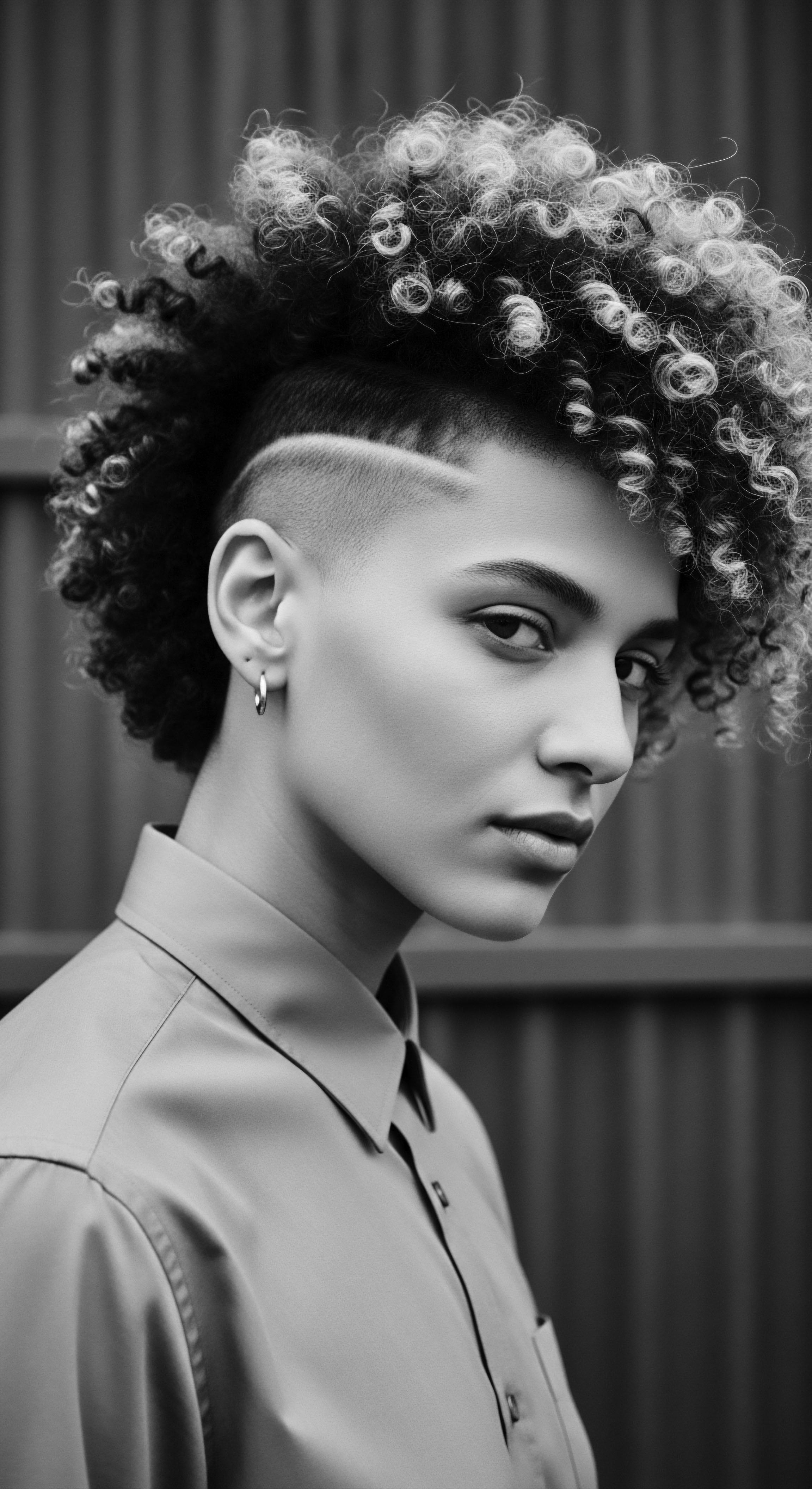
The Elemental Biology of Hair Coils
The elliptical cross-section of the hair follicle, which gives rise to the coil, dictates the hair’s path as it grows from the scalp. This shape causes the keratinocytes, the cells that form the hair shaft, to arrange themselves unevenly, leading to differential growth rates along the inner and outer curves of the hair. This phenomenon is what creates the curl pattern, from gentle waves to tight, spring-like coils.
The distribution of disulfide bonds, which are crucial for hair’s strength and shape, also varies along the length of a textured strand, contributing to its unique tensile properties. Ancestral practices, like slow, consistent oiling and braiding, intuitively worked with these properties, understanding that strength lay not in forceful manipulation but in patient, deliberate nourishment and protection.
The journey of textured hair through professional settings, then, begins not with the question of its “acceptance,” but with an acknowledgement of its inherent design and the deep wisdom embedded in its care. This knowledge, passed down from griots and grandmothers, provides a foundational argument for its rightful place everywhere.
| Historical Understanding Hair character assessed by touch and response to natural preparations. |
| Contemporary Scientific Perspective Follicle shape, cross-sectional geometry, and keratinocyte distribution define curl patterns. |
| Historical Understanding Emphasis on protection through braiding and twisting against elements. |
| Contemporary Scientific Perspective Cuticle layer analysis reveals areas susceptible to environmental stress. |
| Historical Understanding Recognition of hair's thirst, necessitating regular oiling and moisturizing. |
| Contemporary Scientific Perspective Microscopic studies confirm varied porosity and moisture retention across hair types. |
| Historical Understanding The journey from ancestral observation to scientific validation underscores the enduring wisdom of textured hair care. |
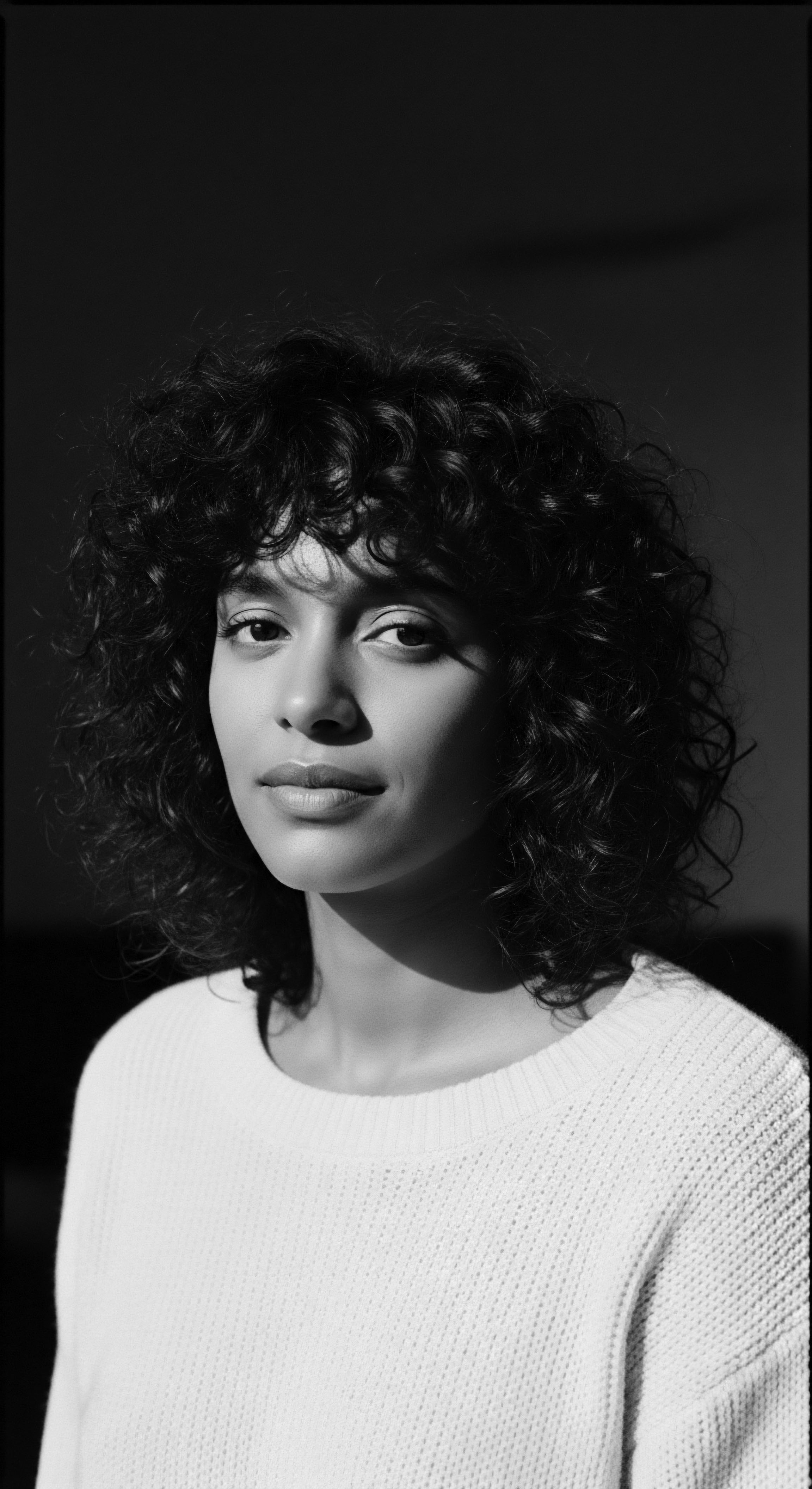
Ritual
The care and adornment of textured hair have, for generations, transcended mere beautification; they have been acts of ritual, deeply communal, and intrinsically linked to identity, status, and survival. These practices, honed over centuries, stand as living archives of resilience and cultural expression. When we speak of textured hair seeking acceptance in professional settings, we confront not just a superficial aesthetic, but the very legacy of how hair has been styled, protected, and presented through time.
Protective styling, for instance, isn’t a modern invention. Its roots stretch back to ancient African civilizations where braids, twists, and locs served not only as markers of tribal affiliation, age, and marital status but also as practical means to shield hair from harsh sun, dust, and laborious daily life. These styles preserved moisture, minimized breakage, and allowed for sustained growth – principles that remain paramount in textured hair care today.
The intricate patterns, often geometric and symbolic, communicated stories without uttering a single word. These ancient styles, in their contemporary forms, still offer profound benefits for hair health and represent a tangible connection to heritage.

The Ceremonies of Styling
Consider the quiet ceremony of a mother braiding her child’s hair, or community members gathering to assist with intricate cornrows. These were not simply tasks; they were opportunities for storytelling, for transmitting wisdom, for solidifying bonds. The very act of styling textured hair became a repository for cultural knowledge, a moment for connection that transcended the physical application of product or the shaping of coils. This communal aspect, the shared knowledge and the sense of belonging fostered around hair practices, forms a core part of its cultural heritage.

How do Ancestral Styling Practices Guide Modern Acceptance?
The legacy of these ancestral styling practices, whether locs, braids, or natural coils, directly informs the conversation around professional acceptance. These are not passing trends; they are expressions rooted in deep historical context. To suggest they are unprofessional is to dismiss centuries of cultural practice and ingenuity.
The push for acceptance means honoring the lineage of these styles, recognizing their innate dignity and their value as expressions of self and heritage. It encourages a shift from judging hair based on colonial beauty standards to appreciating its intrinsic beauty and cultural significance.
Tools of the trade, too, hold historical weight. While today we have a plethora of specialized brushes, combs, and heat implements, ancestral methods relied on natural materials – bone, wood, and plant fibers – fashioned with ingenuity. These were not just instruments; they were extensions of hands, used with deliberate patience and knowledge of the hair’s character. The slow, rhythmic process of detangling with a wide-tooth comb or applying natural butters mirrors the unhurried pace of ancestral care rituals, designed to honor the hair rather than dominate it.
Styling textured hair has always been a ceremonial act, fostering connection and preserving cultural knowledge through generations.
The introduction of wigs and hair extensions, often perceived as contemporary accessories, also possesses a rich history, particularly within various African cultures and subsequently in diasporic communities. In ancient Egypt, wigs were worn by both men and women as a symbol of status, for ceremonial purposes, and for protection against the sun. These were meticulously crafted and often infused with fragrant oils and adornments.
In later periods, particularly for Black women in the diaspora, wigs and extensions became powerful tools for adaptation and self-expression, at times offering a means to navigate societal pressures and shifting beauty standards while retaining a connection to voluminous, rich hair aesthetics. This continuum of using hair enhancements, whether for ritual or adaptation, speaks to a deep, evolving cultural practice, and the choice to wear them in professional settings continues this historical thread, balancing personal expression with environmental demands.
- Cornrows ❉ Ancient West African braiding technique, often mapping symbolic patterns, used for identity, social status, and hair preservation.
- Bantu Knots ❉ Originated in Southern Africa, a coiled knot style offering protection and curl definition, deeply tied to ancestral adornment.
- Locs ❉ A natural hair formation process with roots in various ancient cultures globally, including African spiritual practices, representing spiritual connection and identity.

Relay
The acceptance of textured hair in professional settings is not merely a matter of policy or aesthetics; it is a profound societal negotiation, one that directly confronts deeply ingrained biases stemming from historical power imbalances. The journey from ancestral wisdom to contemporary understanding requires us to recognize how ingrained beauty standards, often Eurocentric, have systematically marginalized textured hair, positioning it as somehow “unprofessional” or “unruly.” This struggle is deeply tied to the heritage of resilience, of individuals and communities asserting their inherent worth against systems designed to diminish them.
Consider the impact of the CROWN Act (Creating a Respectful and Open World for Natural Hair) in the United States. This legislative effort, first signed into law in California in 2019, prohibits discrimination based on hair texture and protective hairstyles associated with race. Its existence is a direct response to countless documented instances of individuals, particularly Black women, being disciplined, fired, or denied opportunities because their natural hair was deemed “unprofessional” by employers. This act, now adopted in many states, highlights a pervasive problem ❉ a disconnect between professional norms and the rich cultural legacy of textured hair.
The fact that legislation is required to protect one’s right to wear their natural hair in a workplace powerfully speaks to the historical prejudice against textured hair and the necessity of confronting it head-on. The passing of the CROWN Act reflects a critical turning point, moving towards a broader understanding of what professionalism truly signifies, one that honors diverse heritages.
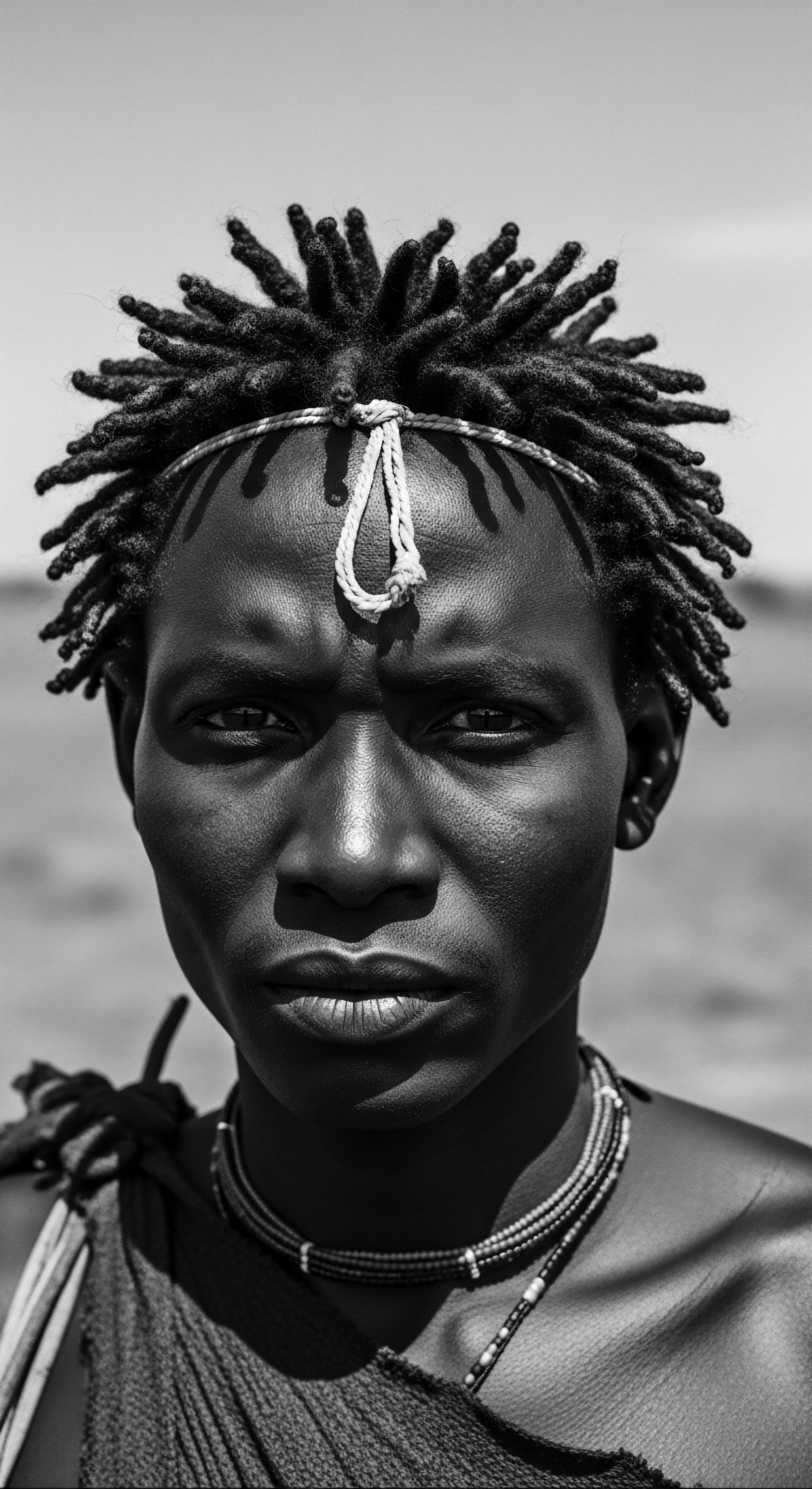
Can Systemic Biases Be Overcome in Professional Settings?
Overcoming these systemic biases requires more than just legal frameworks; it demands a fundamental shift in perception, an educational effort to unearth the beauty, versatility, and historical significance of textured hair. This journey begins with understanding that standards of “neatness” or “professionalism” are often culturally constructed and inherently subjective. What has been deemed “professional” has historically aligned with hair types that do not naturally grow from the heads of many people of African descent. This arbitrary imposition creates a barrier to entry and advancement for individuals whose hair simply behaves according to its biological design.
The holistic care regimen for textured hair, often rooted in ancestral wisdom, further illustrates this point. Traditional practices emphasize nurturing, moisturizing, and protecting the hair. Think of the consistent application of natural oils like shea butter or coconut oil, passed down through generations.
These practices, aimed at promoting hair health and vitality, create hair that thrives in its natural state. Yet, these thriving, natural styles, which are a testament to heritage-informed care, are often the very ones deemed problematic.
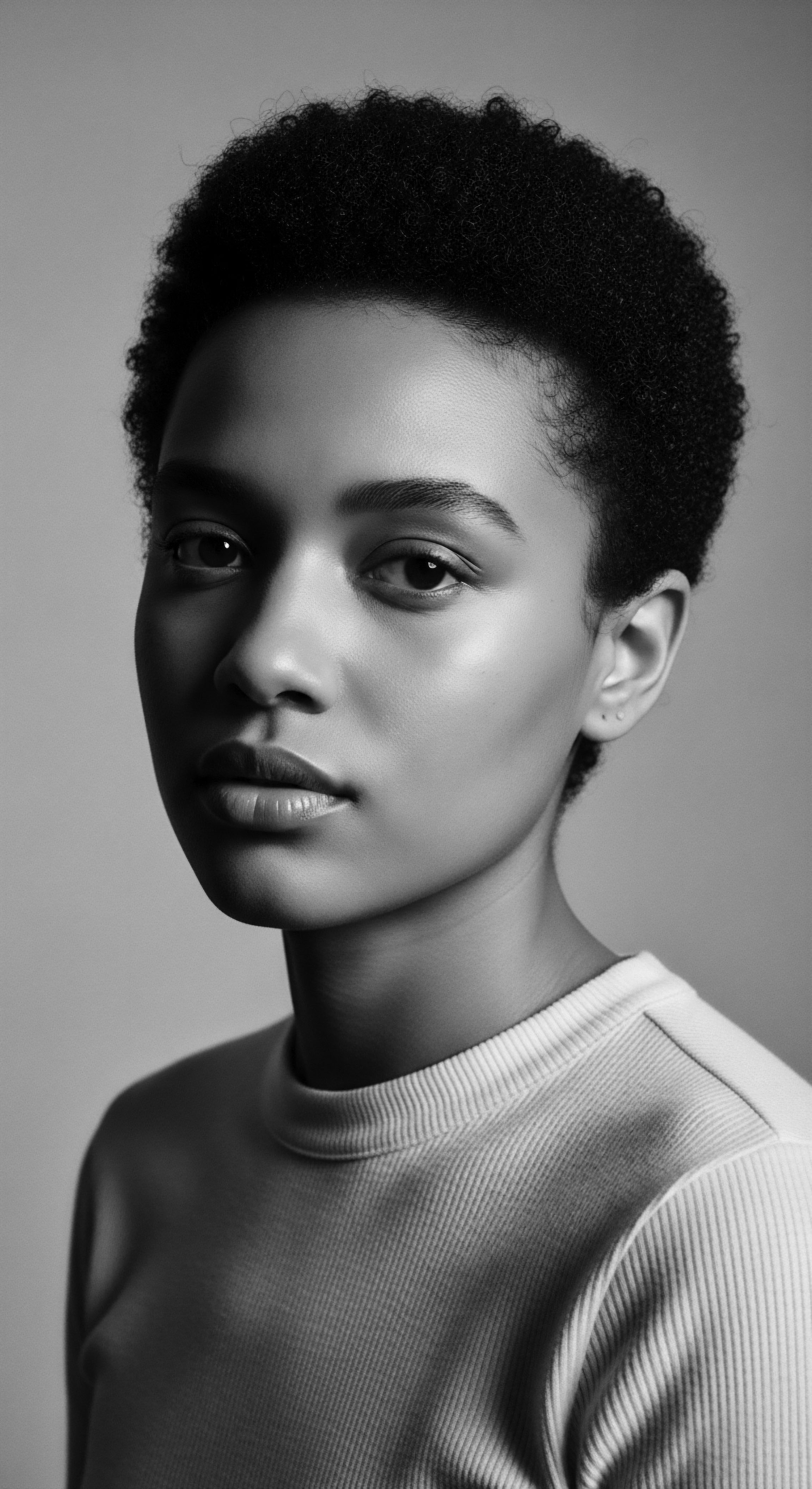
What Role does Ancestral Wellness Play in Professional Identity?
Ancestral wellness philosophies view hair not just as an appendage but as an extension of one’s identity, a receiver and transmitter of spiritual energy. The care given to hair was often intertwined with self-respect and community connection. To deny the acceptance of natural textured hair in a professional sphere is to, in some measure, deny a part of an individual’s self-expression and connection to their heritage. This can lead to code-switching, where individuals feel compelled to alter their hair to conform, a practice that can cause psychological strain and diminish authenticity.
Professional acceptance of textured hair necessitates a shift from subjective Eurocentric beauty standards to an appreciation of its intrinsic beauty and cultural significance.
The shift towards broader acceptance is about creating truly inclusive environments where all forms of self-expression, grounded in cultural heritage, are valued. It recognizes that diversity of appearance contributes to a richer, more innovative professional landscape. When an individual feels affirmed in their natural state, including their hair, they are better able to contribute fully and authentically.
The push for acceptance is, at its heart, a reclamation of space for ancestral forms of beauty within contemporary structures. This also implies an unlearning of historical biases and an active effort to appreciate the artistry and legacy inherent in textured hair in all its forms.
- Shea Butter ❉ A staple in West African hair care, historically used for its emollient properties to moisturize and protect hair from harsh climates.
- Argan Oil ❉ Derived from Moroccan argan trees, a traditional ingredient prized for its restorative qualities and ability to add luster to hair.
- Chebe Powder ❉ A Chadian tradition, known for strengthening hair and reducing breakage, passed down through generations for hair length retention.

Reflection
The journey of textured hair through the corridors of professional life continues, a dynamic unfolding of history, identity, and evolving understanding. What began as an intimate connection to the earth and ancestral practices, echoing in the very formation of each strand, now stands as a powerful symbol in a global dialogue about belonging. The question of whether textured hair can truly find acceptance in every professional setting is, at its core, a question about the elasticity of our collective definitions of professionalism, and whether these definitions can stretch to embrace the full spectrum of human heritage and expression.
The spirit of Roothea, the ‘Soul of a Strand,’ beckons us to look beyond superficial considerations and to discern the deep, enduring value in textured hair’s natural state. It asks us to recognize that the resilience of hair, its ability to coil and thrive despite historical pressures, mirrors the resilience of the communities who wear it. This is not simply about changing a dress code; it is about honoring a lineage, about acknowledging the beauty and wisdom carried in every coil and kink. As we move forward, the path to genuine acceptance lies in a continuous, conscious effort to remember, to learn, and to celebrate the profound heritage that lives vibrantly within textured hair, inviting all to see its innate majesty, allowing it to move freely and authentically in every space it inhabits.

References
- Akbar, F. (2020). The CROWN Act ❉ A Legal and Social Imperative. University of California Press.
- Collins, M. (2019). Natural Hair and the Black Professional ❉ A Sociological Examination. Routledge.
- Davis, A. Y. (2016). Women, Race, and Class. Vintage Books.
- hooks, b. (2015). Ain’t I a Woman ❉ Black Women and Feminism. Routledge.
- Jackson, A. (2018). Hair Story ❉ Untangling the Roots of Black Hair in America. St. Martin’s Griffin.
- Opoku, A. (2017). African Traditional Hair Practices ❉ A Cultural and Scientific Perspective. University of Ghana Press.
- Patton, T. O. (2006). Our Own Kind of Beautiful ❉ Hair Politics and Black Women’s Identity. Duke University Press.
- Thornton, R. (2011). The Biological Basis of Human Hair Variation. Oxford University Press.
